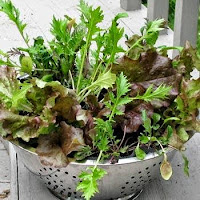If you intend to put in an early spring vegetable garden this year then make a point to grow carrots. Carrots are not only easy to grow they are also nutritious as they will provide you a good source of vitamin A.
 |
You can grow carrots in the ground, in a raised bed, or in a container. As long as you provide the carrots with their growing requirements you be able to grow and harvest a delicious sweet vegetable.
When
to plant
Carrots are a hardy vegetable that prefers to grow in the sun when the weather is cooler. The best time to plant carrots is when the soil has thawed out from winter and can be turned over. Prepare your carrot bed by turning over the soil with your tiller. Loosen the soil to 18 inches deep and then work out the soil clumps until the soil texture is loose. Carrots will grow well in deep soil that is a fine texture and is well-drained.
Where to plant
Before planting your carrots it is best to test the soil as carrots do not grow well in soils that are acidic. A pH of 6.0 to 6.8 is agreeable soil for growing carrots.
Sow carrot seeds into a prepared garden site in early spring. Plant the seed ¼ inch deep in rows. Space the carrots twelve inches apart. When all the seeds are planted, cover the seedbed lightly with compost and water well.
Caring for carrots
Keep the carrot bed hydrated during the growing season. Soil that is evenly moist but not wet is best.
When the seedlings emerge from the soil you may need to thin them out. Best to have 12 inches in-between plants. Apply an organic mulch of pine needles, tree bark or wood chips around the carrots to keep the soil moist and cool and to deter weed growth.
Tips
You can grow carrots in the ground, in a raised bed, or in a container.
Carrots grow best when there is hydration. Heavy spring showers will bring sweet and delicious carrots as carrots do not grow well in drought or hot weather. The best temperature to for growing carrots is 60 to 70 degrees.
Fertilize carrots with compost when you sow the seed and then again when the tops are 7 to 8 inches in height.
Watch the soil line for orange crowns, if you see this then cover them with soil or compost to protect them from sun damage and garden pests.
Prevent pests; grasshoppers, and wireworms, in the garden by dusting with diatomaceous earth food grade.
For small yards grow baby carrots (Little Finger) in a container or raised garden bed. These carrots only grow three inches however they are crisp and sweet.

